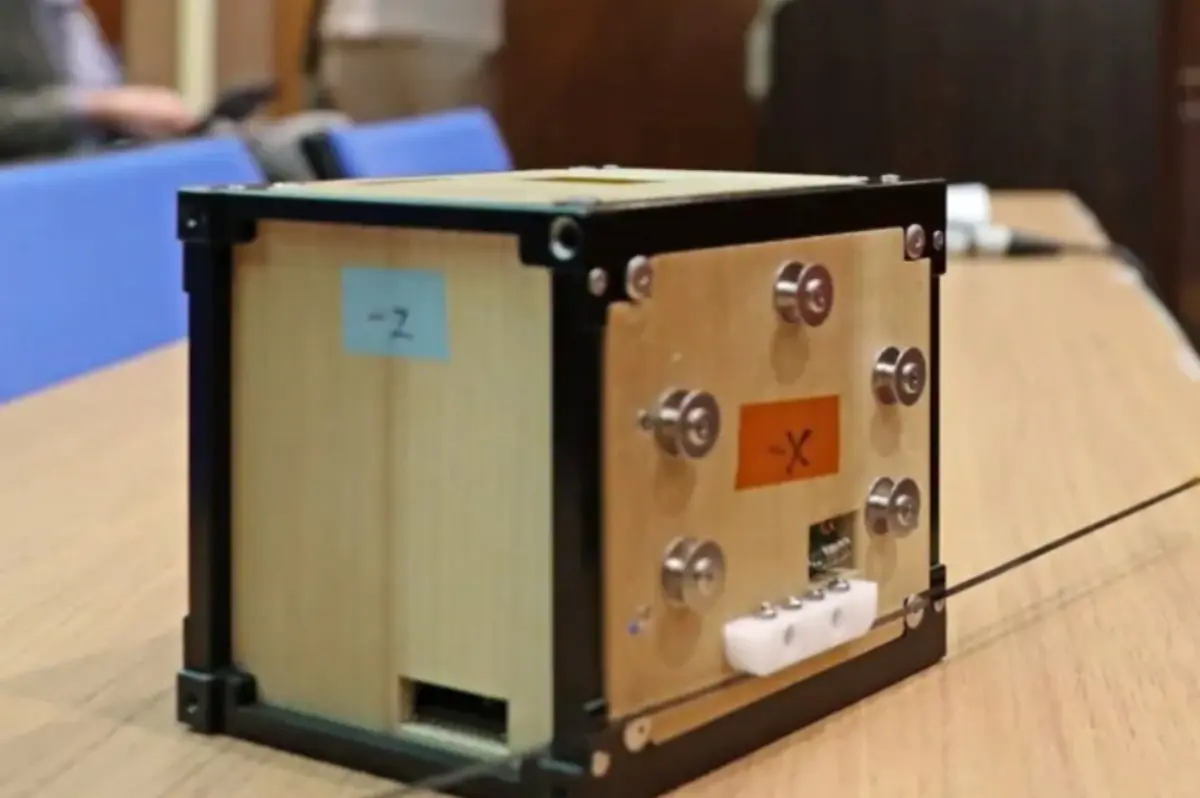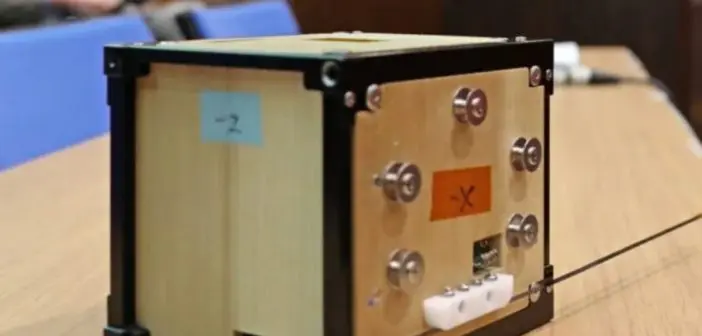
Japanese researchers have sent a small wooden satellite into space. Last week, the 10 x 10 x 10 centimetre satellite called LignoSat was ferried to the International Space Station (ISS) onboard SpaceX’s 31st robotic resupply mission. The cubesat will be deployed into orbit about 400 kilometres above Earth from the ISS in December.
Researchers at Kyoto University and logging company Sumitomo Forestry developed LingoSat. Instead of aluminium, LignoSat’s panels have been built from a type of magnolia tree, using a traditional technique without screws or glue. The mission aims to test a hypothesis that certain types of timber have a role in the space sector. They also want to help reduce the environmental impact of space activities, particularly when decommissioning satellites and other space vehicles.
The researchers told Reuters that wood is more durable in space than on Earth. This is because no water or oxygen would rot or inflame it. However, LignoSat isn’t entirely timber. It has traditional aluminium structures and electronic components. The satellite also includes onboard monitors that assess how its wood reacts to the extreme environment of space. The planned orbit time is six months.
“Satellites that are not made of metal should become mainstream,” said Kyoto University professor and former astronaut Takao Doi.
NASA agrees wood may have a role in space
Beyond the next six months, Doi’s team is developing a long-term strategy to send timber structures to the Moon and Mars. “With timber, a material we can produce ourselves, we can build houses and live and work in space indefinitely,” he said.
“While some of you might think that wood in space is a little counterintuitive, researchers hope this investigation demonstrates that a wooden satellite can be more sustainable and less polluting for the environment than conventional satellites,” said NASA Deputy Chief Scientist Meghan Everett last week.
“The main objective is to determine whether wood can be used in space,” she added. “To do this, the researchers will measure the temperature and strain of the wooden structure and see how it might change in the vacuum environment of space with atomic oxygen and radiation conditions.”
Other than monitoring devices, the small 900 gram wooden satellite will not be carrying any scientific equipment. However, Everett said NASA wanted to know how well the wooden satellite communicates with ground stations. “This is a first-go tech demo,” said said. “We’ll collect the information, and if the data comes back and it looks good, I’d imagine that would set off some additional work and investigations.”
Pre-launch testing favours magnolia
The Japanese researchers spent years preparing for last week’s launch. They have previously sent samples of Erman’s birch, Japanese cherry, and magnolia bovate to the ISS for extended space environment testing.
After the samples returned to Earth, they underwent strength testing and analyses of elemental composition and crystal structure. The Magnolia sample proving the best performer.
“The team decided on Magnolia’s relatively high workability, dimensional stability, and overall strength,” reads a Kyoto University statement.
If LignoSat survives its planned orbit and the Japanese researchers can prove that timber has a role in space, they plan to pitch their technology to SpaceX, among others.





